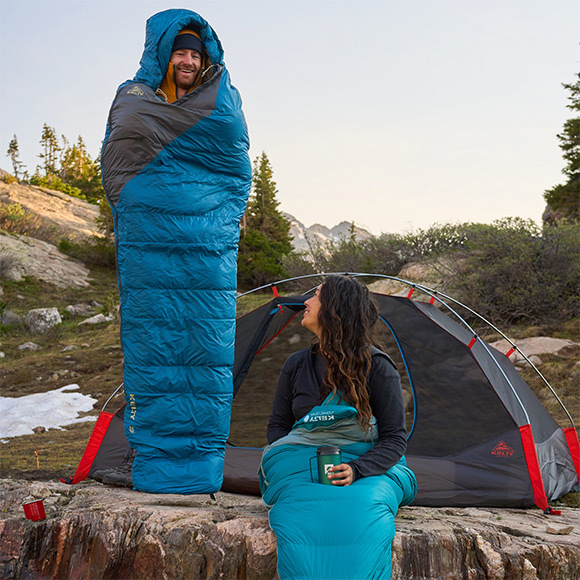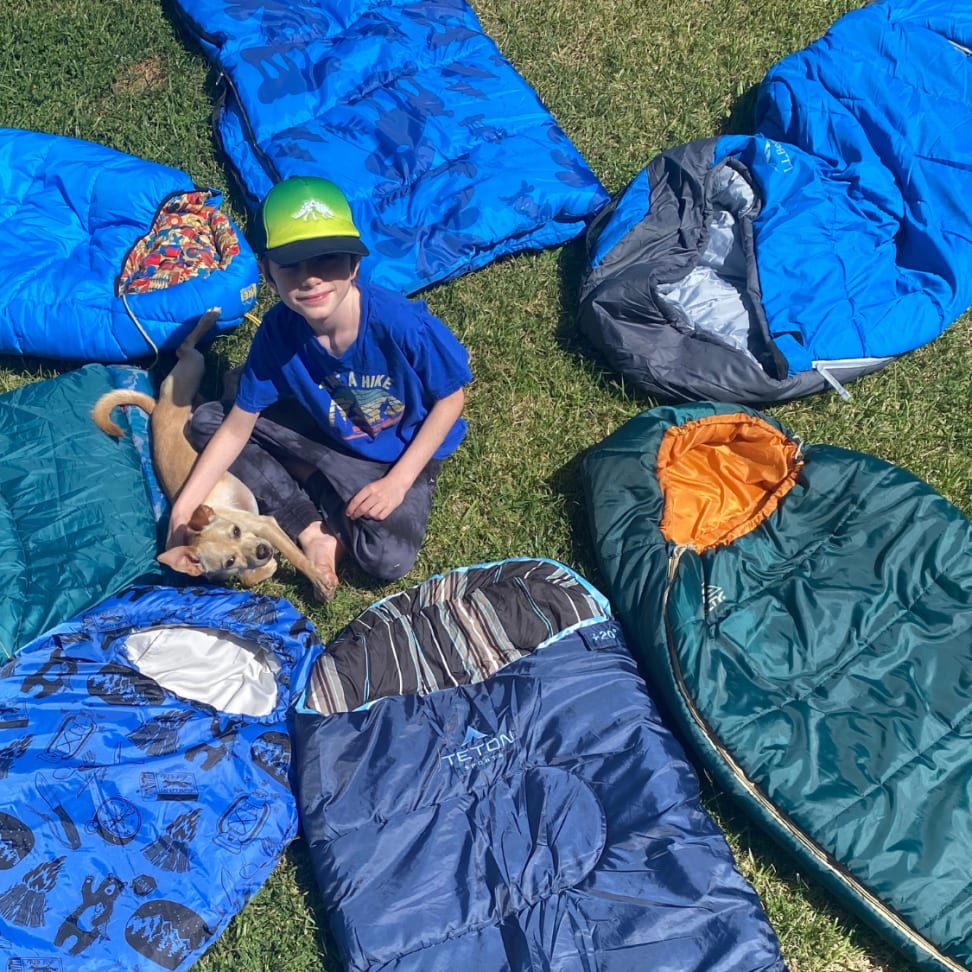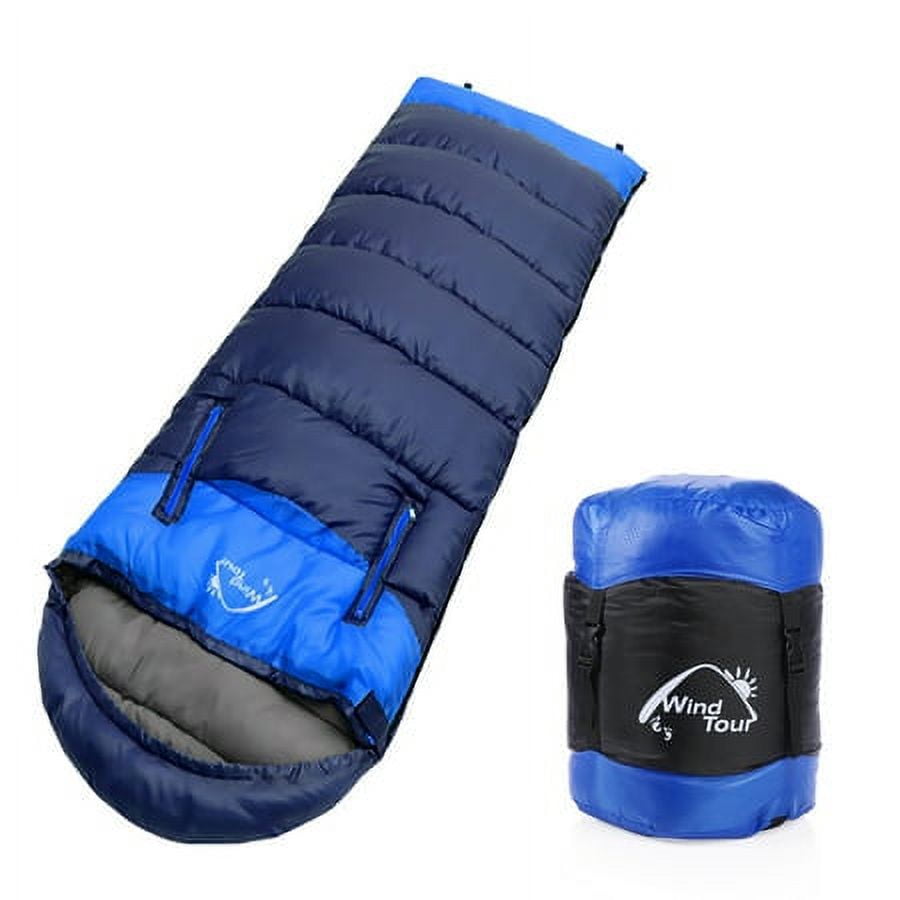Introduction:
When it comes to camping, one of the most important pieces of gear you’ll need is a good sleeping bag. Whether you’re backpacking through the wilderness or car camping at a local campground, having the right sleeping bag can make all the difference in your comfort and warmth during the night. With so many options available on the market, it can be overwhelming to choose the best one for your needs. In this comprehensive guide, we’ll break down everything you need to know about sleeping bags for camping, from different types and features to tips on how to choose the right one for you.
Part 1: Types of Sleeping Bags
Level 1: Mummy Bags and Rectangular Bags
- Mummy bags are designed to fit snugly around your body, providing maximum warmth and insulation. They are great for cold weather camping and backpacking trips.
- Rectangular bags offer more room to move around and are suitable for warmer climates or campers who prefer more space while sleeping.
Level 2: Quilts and Double Bags
- Quilts are a lightweight and versatile option that can be used as a traditional sleeping bag or opened up as a blanket. They are popular among ultralight backpackers.
- Double bags are designed for couples or campers who want extra space to share with their partner. They offer a roomier design and are typically heavier than single sleeping bags.
Part 2: Insulation Types
Level 1: Down Insulation
- Down insulation is made from the soft, fluffy feathers found underneath the outer feathers of ducks and geese. It provides excellent warmth-to-weight ratio and is compressible for easy packing.
- However, down insulation loses its insulating properties when wet, and it is more expensive than synthetic insulation.
Level 2: Synthetic Insulation
- Synthetic insulation is made from polyester fibers that are designed to replicate the warmth and loft of down. It is more affordable and retains its insulation properties when wet.
- Synthetic insulation can be heavier and bulkier than down, making it less ideal for backpacking trips where weight and packability are important factors.
Part 3: Temperature Rating
Level 1: Understanding EN Ratings
- The EN (European Norm) rating system provides a standardized method for manufacturers to test and label the temperature rating of sleeping bags.
- EN ratings consist of three measurements: Comfort, Lower Limit, and Extreme. Comfort rating indicates the lowest temperature at which a standard woman can have a comfortable night’s sleep. While Lower Limit indicates the lowest temperature for a standard man.
Level 2: Choosing the Right Temperature Rating
- When choosing a sleeping bag, consider the lowest temperature you’re likely to encounter during your camping trips. Select a bag with a temperature rating that matches or exceeds the coldest nights you anticipate.
- Keep in mind that personal factors, such as metabolism and clothing worn while sleeping, can also affect your comfort level in a sleeping bag.
Part 4: Features and Design
Level 1: Hood and Collar
- A hood with a drawstring closure helps to trap heat around your head, preventing warmth from escaping during cold nights.
- A draft collar, or insulated tube around the neck area, can also prevent heat loss and keep you cozy inside the sleeping bag.
Level 2: Zipper and Draft Tubes
- YKK zippers are known for their durability and smooth operation, making it easy to open and close the sleeping bag without snagging.
- Draft tubes are filled with insulation and placed behind the zipper to prevent cold air from seeping through the zipper teeth.
Part 5: Care and Maintenance
Level 1: Cleaning and Storage
- Always follow the manufacturer’s instructions for cleaning your sleeping bag, as improper cleaning can damage the insulation.
- When not in use, store your sleeping bag in a large cotton storage sack or hang it in a cool, dry place to maintain its loft and insulation properties.
Level 2: Repairing and Rejuvenating
- Repair small tears or holes in your sleeping bag with a patch kit specifically designed for outdoor gear.
- To rejuvenate the loft of your sleeping bag’s insulation, consider using a dryer with a low heat setting and a couple of clean tennis balls to fluff up the insulation.
Part 6: Understanding Temperature Ratings in Sleeping Bags
When it comes to choosing sleeping bags for camping, understanding temperature ratings is essential. Temperature ratings indicate the lowest temperature at which a sleeping bag will keep you warm. It’s important to note that these ratings are based on a standard testing method and can vary depending on individual preferences and factors such as metabolism and clothing.
Sleeping bags are generally categorized into three temperature ratings: summer, three-season, and winter. Summer bags are designed for temperatures above 35°F, three-season bags are suitable for temperatures between 10°F and 35°F, and winter bags are intended for temperatures below 10°F. It’s important to choose a sleeping bag with a temperature rating that matches the expected conditions of your camping trip.
In addition to the temperature rating, other factors that can affect the warmth of a sleeping bag include insulation type, fill power, and construction. Down insulation is known for its superior warmth-to-weight ratio, while synthetic insulation is more water-resistant and retains its insulating properties when damp. Fill power refers to the loftiness of the insulation, with higher fill power indicating better insulation. Furthermore, sleeping bag construction, such as mummy or rectangular shape, can also influence its warmth and comfort.
Understanding temperature ratings and other factors. It will affect the warmth of a sleeping bag is crucial in choosing the right one for your camping adventures. By considering these aspects, you can ensure a good night’s sleep even in the great outdoors.
Part 7: Care and Maintenance of Sleeping Bags
Proper care and maintenance of your sleeping bag is essential to ensure its longevity and performance. Whether your sleeping bag is filled with down or synthetic insulation. There are several key practices to keep in mind to preserve its quality and warmth.
First and foremost, it’s important to always store your sleeping bag in a loose, uncompressed state to maintain its loft and insulation properties. This means avoiding long-term storage in a stuff sack, which can compress the insulation and reduce its effectiveness. Instead, use a large storage sack or hang the sleeping bag in a cool, dry place.
Another crucial aspect of sleeping bag maintenance is cleaning. It’s recommended to follow the manufacturer’s instructions for cleaning your sleeping bag, as washing methods may vary for down and synthetic insulation. Most sleeping bags can be spot-cleaned with mild soap and water, while some are machine-washable. Additionally, it’s important to thoroughly dry the sleeping bag after cleaning to prevent mold and mildew growth.
In addition to storage and cleaning, proper usage of a sleeping bag can also contribute to its longevity. Using a sleeping pad and wearing clean sleepwear can minimize the amount of dirt and body oils that get into the sleeping bag, reducing the frequency of washing and preserving its insulation.
By following these care and maintenance practices, you can ensure that your sleeping bag will continue to provide warmth and comfort on your camping trips for years to come.
Part 8: Choosing the Right Size and Weight of a Sleeping Bag
When it comes to choosing a sleeping bag for camping, size and weight are important considerations. The right size and weight can provide comfort, portability, and efficiency in different camping conditions.
Sleeping bags come in various shapes and sizes, with the most common being mummy and rectangular. Mummy-style sleeping bags are more form-fitting and lightweight, providing better insulation and heat retention. They are ideal for backpacking and cold weather camping due to their compactness and efficiency. Rectangular sleeping bags, on the other hand, offer more room for movement and are suitable for family camping and warmer conditions.
In addition to size, the weight of a sleeping bag can impact its portability and ease of use. Lightweight sleeping bags are preferred by backpackers and hikers, as they minimize the overall load and allow for easier transport. Conversely, heavier sleeping bags may be more suitable for car camping and provide additional comfort and insulation.
When selecting a sleeping bag, it’s important to consider the trade-offs between size, weight, and comfort based on your camping preferences and needs. By choosing the right size and weight, you can ensure a good night’s sleep while enjoying the great outdoors.
Conclusion:
Choosing the right sleeping bags for camping is crucial for a comfortable and restful night’s sleep in the great outdoors. By understanding the different types, insulation options, temperature ratings, and features available, you can make an informed decision that best suits your camping needs. Take the time to research and try out different options to find the perfect sleeping bag. It will keep you warm and cozy during your outdoor adventures.



